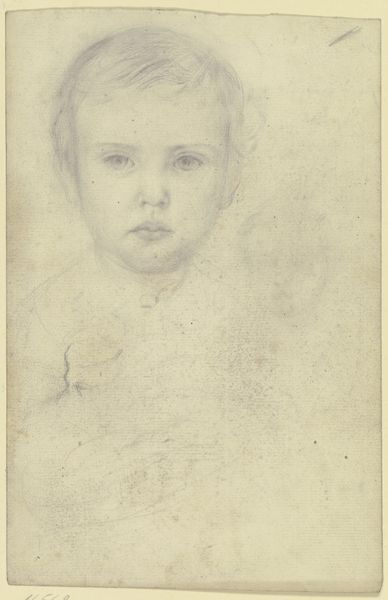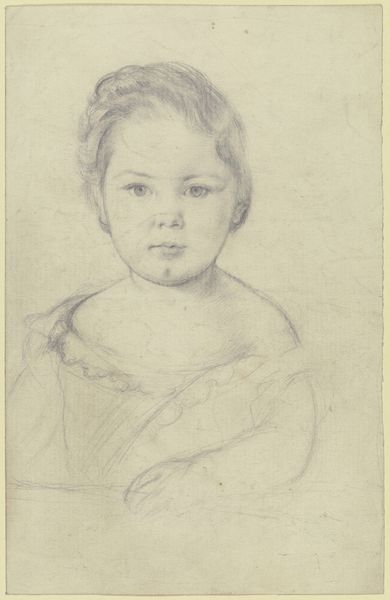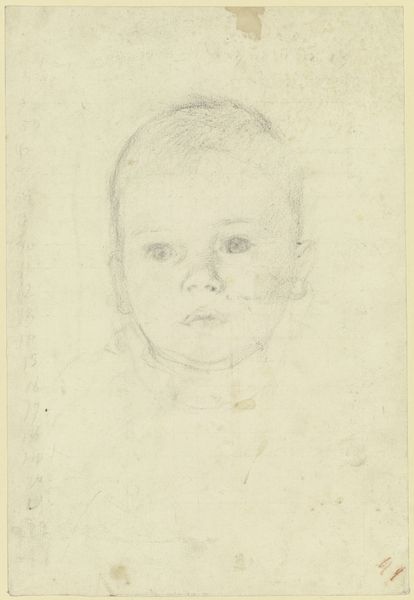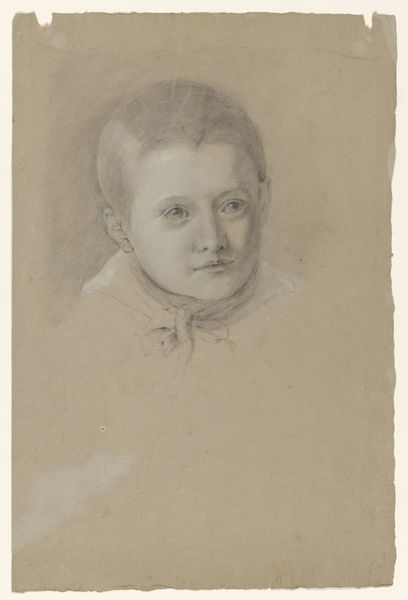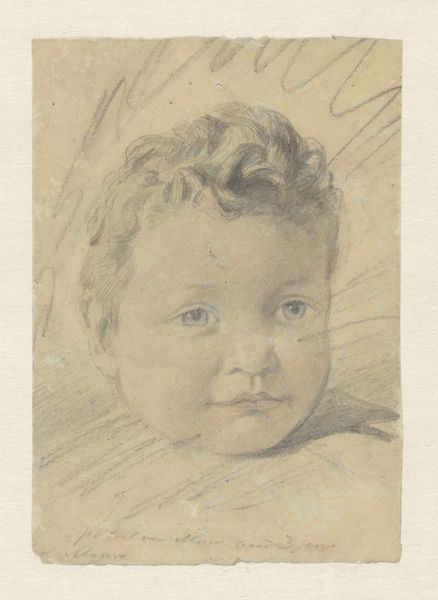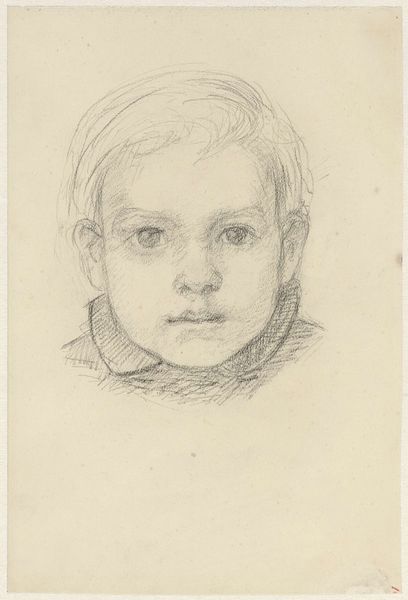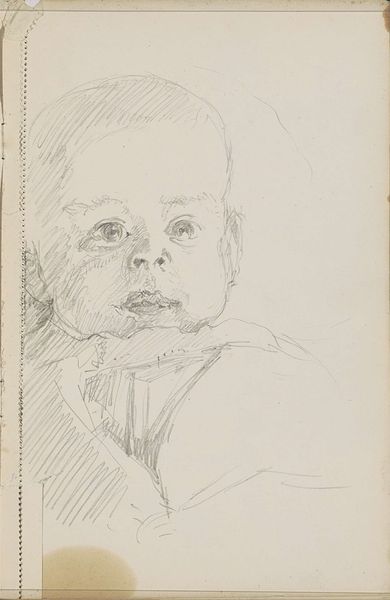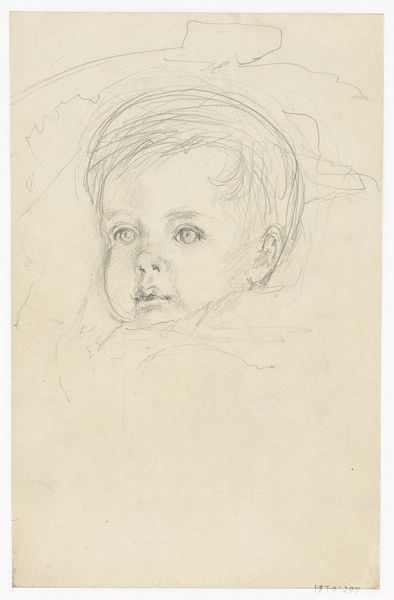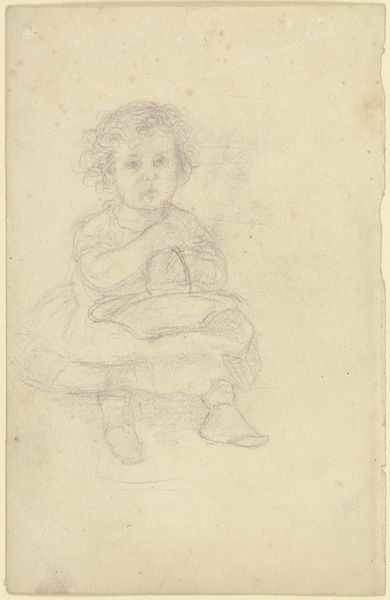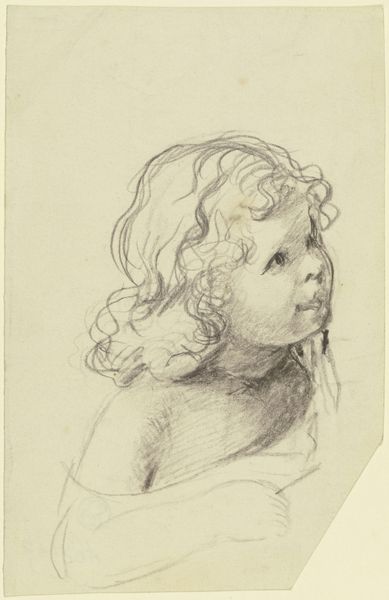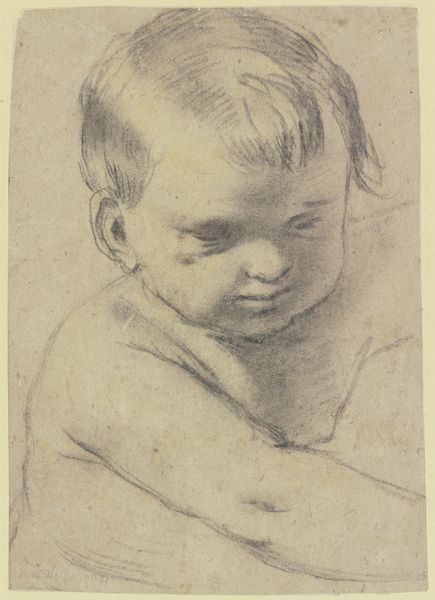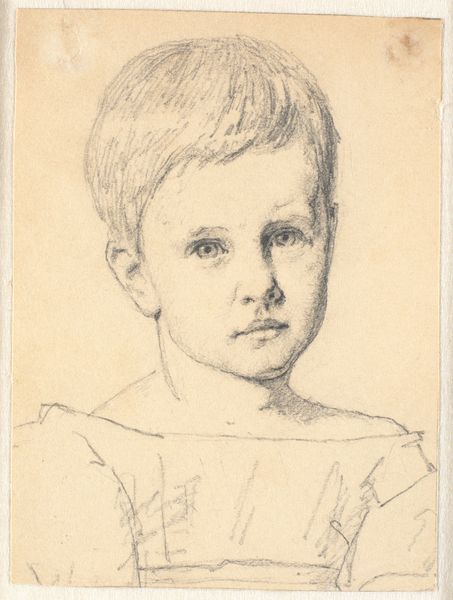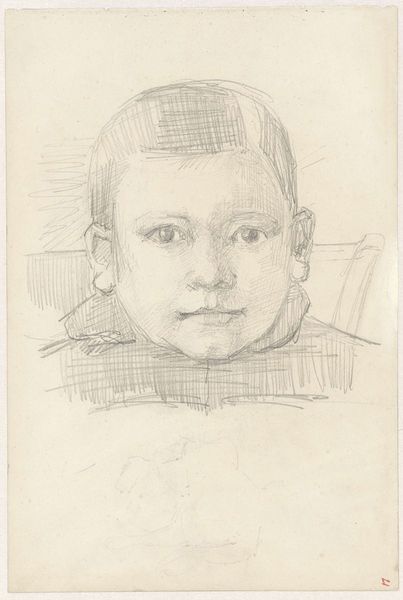
drawing, paper, pencil
#
portrait
#
pencil drawn
#
drawing
#
toned paper
#
facial expression drawing
#
light pencil work
#
16_19th-century
#
pencil sketch
#
old engraving style
#
paper
#
portrait reference
#
german
#
pencil drawing
#
pencil
#
portrait drawing
#
pencil work
#
realism
Copyright: Public Domain
Editor: Here we have Otto Scholderer's "Knabenbildnis (Victor Scholderer)", a delicate pencil drawing on paper, housed right here at the Städel Museum. I’m struck by how this simple sketch captures such a palpable sense of childhood innocence. What do you see in this piece? Curator: Well, placing it within the context of 19th-century German portraiture, it becomes clear that Scholderer is engaging with, and perhaps gently subverting, established traditions. These sorts of commissions were historically reserved for the elite, bolstering their social standing through idealized likenesses. Editor: So, is Scholderer democratizing portraiture by focusing on his child? Curator: Precisely! Consider the medium. Pencil drawings were often preparatory sketches, never intended for public display. By presenting it as a final work, Scholderer elevates the informal, intimate moment, shifting the focus from societal status to familial affection. It also suggests a shifting role of art and the artist. Editor: That’s fascinating! The sketch-like quality does make it feel very personal, almost like a glimpse into the artist's private world. It humanizes the family and brings awareness of Scholderer's relationship to the social norms for fine art in that period. Did it become popular during his time? Curator: Initially, art that focused on the middle class didn't garner as much institutional or social excitement, as what would be displayed by the upper class, or in public spaces. But Scholderer gained recognition through the Munich school in the 1860's! The artwork stands as a reminder of how artistic intentions influence social dialogues through visual representation. Editor: I hadn’t considered it that way. It's amazing how much historical weight can be carried in a simple drawing. Curator: Indeed. It makes you wonder about the role of family, and the place of intimacy and informality within 19th-century art. Thanks for offering your perspective as we dive into the context! Editor: And thank you for making the image all the more relevant, now that I understand its implications.
Comments
No comments
Be the first to comment and join the conversation on the ultimate creative platform.
